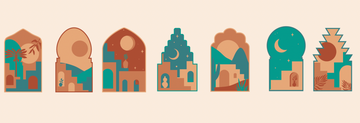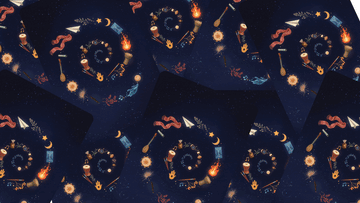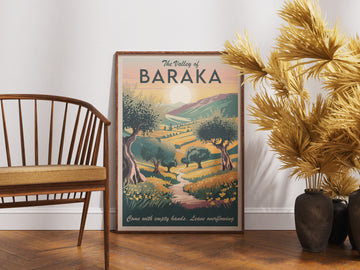There’s a word I’ve been sitting with lately: threshold.
In English, it once meant the wooden plank that held grain inside a barn, the edge that marks transition. In Arabic, we say aatba (العتبة): an entryway that is never just physical. In North Africa, the aatba is sacred. It’s where shoes are left behind, where salt may be sprinkled to guard against what shouldn’t follow, where a mother whispers a prayer as someone steps into the unknown, or where a bowl of water waits by the door to wash away the dust from the road.
The aatba is not quite inside, not quite outside; it asks us to pause, set intention, and cross with care.
Anthropologists call it liminal space, the place between what was and what will be. Artists know it too. The Impressionists painted landscapes where form dissolved into light, faces and gardens trembling at the edge of becoming. In those blurred contours, they found something more truthful than precision: motion, change, aliveness. Jazz musicians know it as well in improv, it’s the breath between notes, the risky moment when sound hangs in uncertainty, waiting to become.
Psychologists describe liminality as the raw ground where old identities dissolve but the new ones aren’t yet formed. Even the brain understands: confusion is not failure but a necessary forgetting before new pathways take root.
So maybe the in-between isn’t a detour, maybe it’s the very heart of becoming.
I’ve lived in that in-between, packing up homes that smelled of cumin, smiling through goodbyes while knots tightened in my chest. I fought to hold together what was already dissolving, patching pieces back into shape because letting go felt like failure. It took me years to learn that I could bless what shaped you and still set it down.
For me, thresholds ache. Not the sharp ache that demands attention, but the quiet one under the ribs. The ache of love still alive, asking to be honored. For years I tried to outrun it, but it was never there to punish me but help me grow.
That said, crossings aren’t always dramatic. Sometimes they’re almost invisible: the steam rising from a pot of mint tea, the pause before closing a suitcase, the way light stretches across a room you’re about to leave behind.
I write about it because I still find myself searching for a map, a clear voice telling me what comes next. But life only hands me small signs: a green door on a narrow street, the hush of a bird’s wings at dusk, the ache that rises and falls without explanation. Maybe the next step doesn’t appear until we stop insisting on knowing the whole way.
I’m also writing this from this side of the aatba, not other side. I’m still standing there one hand on the doorframe, one heart trembling with what’s being left behind. Some days I’m ready to step through. Other days, I linger, wishing I could hold it all a little longer.
What I write about is what I learned during my crossings. That thresholds aren’t meant to be rushed, but lived: fully, imperfectly, humanly. And maybe the most sacred thing we can do is not force ourselves forward, but bless the ground we stand on, even as we lift one foot into the unknown.
If you’re standing at your own threshold be it an ending, a beginning, a move, a decision, half longing, half reaching, know this: you’re not alone.
I’m there too.
Warmly,
Ratiba






